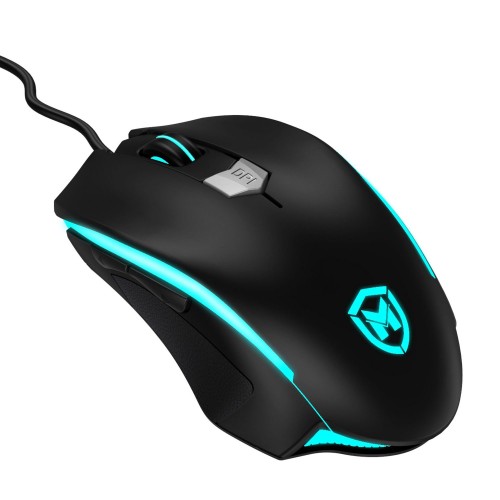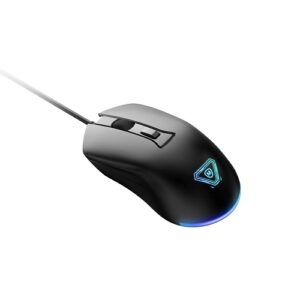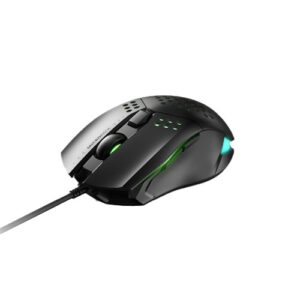Understanding Wired Optical Sensors and DPI Settings
Wired optical sensors are integral components of modern gaming mice, delivering precision and responsiveness necessary for competitive gameplay. One of the primary specifications to consider when selecting a wired optical sensor is the DPI, or dots per inch, which quantifies how far the cursor moves based on the movement of the mouse. DPI settings for wired optical sensors typically range from 1000 to 4000 DPI, allowing gamers to adjust sensitivity according to their unique playing styles.
Higher DPI values enable faster mouse movements, making them suitable for gamers who prefer quick reflexes and rapid maneuvers in fast-paced games. Conversely, lower DPI settings allow for meticulous aiming, ideal for first-person shooters or games requiring precise control and accuracy. Understanding and adjusting the DPI can significantly impact a player’s performance, as inappropriate settings may hinder their ability to respond effectively to in-game stimuli.
In addition to DPI, the tracking method employed by wired optical sensors plays a crucial role in gameplay experience. Optical sensors utilize light to track movement, providing superior accuracy compared to traditional sensors that may struggle with responsiveness on various surface types. This capability is critical during intense gaming sessions, where every millisecond counts and precise tracking can determine the outcome of competitive matches.
Furthermore, many wired optical sensors incorporate a 6D button feature, enhancing user experience through added functionality. This feature allows gamers to assign multiple commands or macros to specific buttons, promoting greater control without the need to shift their grip. As a result, players can execute complex maneuvers seamlessly and maintain a tactical advantage in real-time. Selecting a wired optical sensor with tailored DPI settings, effective tracking methods, and enhanced controls ultimately supports gamers in fine-tuning their performance, ensuring an engaging and competitive experience.
Physical Specifications and Warranty Information
Wired optical sensors are meticulously engineered to cater to the specific needs of gamers, ensuring both performance and comfort during extended gaming sessions. One of the most appealing physical specifications of these sensors is their sleek black finish, a color scheme that effortlessly complements a variety of gaming setups. This design choice not only enhances the aesthetic appeal but also tends to align with the preferences of many users who favor a minimalist yet stylish appearance. The ergonomic features of wired optical sensors are equally commendable, as they are designed to fit comfortably in the hand, allowing for better control and reducing fatigue over time.
In addition to their striking design, the physical attributes of wired optical sensors include lightweight construction and textured grips, which contribute to an overall enjoyable user experience. These features ensure that gamers can maintain peak performance, whether engaged in casual play or competitive gaming. The adaptability of the sensors to various gaming genres is also noteworthy, as they provide varying levels of sensitivity and precision, allowing players to customize their setup according to personal preferences.
When it comes to warranty information, most manufacturers offer a one-year warranty for their wired optical sensors, demonstrating confidence in the product’s durability and reliability. This warranty typically covers defects in materials and workmanship, giving consumers peace of mind during their purchase. In some cases, this coverage includes comprehensive support for troubleshooting and potential repairs, which reflects the manufacturer’s commitment to customer satisfaction. Gamers should always examine warranty details and conditions prior to purchasing, as it provides valuable insight into the product’s expected longevity and the manufacturer’s dedication to maintaining quality standards.





